Pernille Ripp's Blog, page 27
August 9, 2018
A True First Day Back
I have been stopping by our classroom, dropping off books, bringing in new yoga balls, rearranging, cleaning, taking the time to do all of those little things that get us started as we think of the year ahead. As we get excited for the year ahead. As we plan in our heads, hold on to our dreams, and try to make a path for the year that lies ahead.
I have been thinking about that first day, the almost 80 minutes I will have with each of our new classes as I pour over their names and class lists get settled. About the type of experience, I want to try to set up for these kids who may be nervous about middle school, who may be excited or not to come back to school. About that very first day and the first impression that I would like to give these kids. After all, I want them to feel welcome, I want them to feel safe, I want them to feel challenged, and I want them to want to come back.
That can be a tall order for just a simple first day.
And while there is an abundance of great first day ideas online; puzzles, team building, challenges, no work, no syllabus! I also worry about whether some of these activities set kids up to only disappoint them later. Do these activities entice kids to think that this year, that our class, will be different than what they are used to – yeah! – but then only to be disappointed the next day when all of the first day “fun” is now gone and the traditional structure of school begins? I guess it depends on the type of classroom we create. If our class is not one filled with choice, if our class is not one filled with hands-on challenges, if our class is one mostly centered around the teacher but the first day isn’t like that, then what are we trying to make the students believe?
So I think there is a balance to be had. Yes, of course, get kids excited but at the same time don’t hide the type of class it will be. Find components that will give students a feel for what they can expect so that they can legitimately start to feel welcome. Be honest in your expectations and set the groundwork. Ease back into school but do it through meaningful work.
Besides, it will never truly be about the activities, but always about how the kids end up feeling after being with us.
As for my own first day back? I am not sure, yet. There will be picture books, there will be book shopping, there will be choice and there will be conversation. There will be a chance for us to feel each other out and for students to start to fill in the gaps of what this year may be like. I still have a few weeks left of summer to dream, we shall see what happens.
If you like what you read here, consider reading my newest book, Passionate Readers – The Art of Reaching and Engaging Every Child. This book focuses on the five keys we can implement into any reading community to strengthen student reading experiences, even within the 45 minute English block. If you are looking for solutions and ideas for how to re-engage all of your students consider reading my very first book Passionate Learners – How to Engage and Empower Your Students. Also, if you are wondering where I will be in the coming year or would like to have me speak, please see this page.
August 6, 2018
Questions to Assess our Classroom Library Before Back-to-School
I have been spending some time in my classroom these last few weeks. Getting ready, getting excited. At the end of last school year, I moved all of our bookshelves, rearranged the furniture, and tried to update this little space that hopefully becomes our space as it is filled with students. Tried to create some sort of new space that would shape the experiences we are bound to have; places to gather, places to pull away. Slowly, but surely, it is starting to come together.
The tables stand ready, the ideas are too, but the books? They are not ready. Not yet. They beckon to be looked at, sorted, re-displayed, and yes, even gotten rid of. New readers mean new book adventures ahead, new needs arising for the kids I am entrusted with, new relationships waiting to happen. Weeding through my classroom library is always a must before the beginning of the year.
Books are an extension of our beliefs and so when students enter into our school or classroom libraries, they become the very first indicator of who we are and what we believe in. They are a direct reflection of which type of reading experience we want o create with our students. Which type of teacher we are. What we hold dear, what we value. This is why book displays cannot and should not be haphazardly put together. This is why we must look at the books we bring in, the books we offer up for students to experience, and see which experience they are actually creating.
So to go through our classroom library, I ask myself the following questions starting with the fairly simple to the more in-depth.
How do the books look? Which books are falling apart and need to either be thrown out or replaced? Which books have really outdated covers that are preventing them from being read? How about text size and font? For books that I know would be read but might not be because of “outside” factors, I create a replacement wishlist.
How do the bins look? Just like the books, some of our bins get fairly beat up, do they need to be replaced? Relabeled? Moved around?
How is our overall organization? Because our library is one based on genres and sub-genres, these are changeable, meaning if I feel like we have a large collection of some books perhaps they need their own sub-genre? Perhaps a genre is not being read and needs to be reorganized? That also includes which bookshelves the bins are on, are they being read where they are or do they need to be moved somewhere else?
How is our checkout system? Ours is a simple one – paperbacks you just grab, hardcovers you give me the dust cover with a post-it with your name on it and I file it away until the book is brought back. Will this still work for the students I have?
How will I introduce our library? Students will bookshop on the very first day of school with piles of books awaiting them on the tables but how will they be introduced to our library? This year, as in past years, it will be an actual lesson on book-shopping, yes, even in 7th grade, and an exploration of different genres as we start our to-be-read list.
Will this book be read more somewhere else? Sometimes when we have a book abundance problem, books are simply not being discovered. So looking through and pulling books you wish students were reading but they aren’t and then handing them to another teacher may just get that book back in circulation. This is also a great way to create space for incoming books in your library because chances are you will be adding more books this year.
Whose stories are being represented in our library? And whose stories are not? Where are my book gaps, which genres of books or authors do we not have a lot of? Can all children find windows, mirrors, and sliding glass doors to quote Dr. Rudine Sims Bishop.
Not just whose, but how are people’s stories represented? Are we only representing the Native experience as a thing of the past? Is the African American experience only represented through slavery, Civil Rights, or police brutality? Are all the books featuring everyday things featuring white characters? This is an ongoing assessment that needs to be attended to with every book purchase we make.
Do we have harmful representation? Back to school is also a good time to be on the lookout for problematic text. Knowing what is being questioned in the wider literary world is really important and provides us with a chance to learn. I think about books like Little House on the Prairie or even newer books that come out that may not be healthy to have in our libraries. I turn to people like Debbie Reese and Edi Campbell to guide me in this work.
Which books are you blessing? Critically evaluate which books are on display whether it is first in a bin or on an actual shelf. Whose experiences are you highlighting? Whose voices are you urging others to read? I take a lot of time pulling books and displaying to offer our students a varied reading experience from day one. I want them to see the possibilities in our classroom library of what types of reading experiences they can have and that starts with all of the books enticing them.
As summer winds down and the school year beckons, I am excited to meet the kids that will soon become part of our family. I am excited to help them have meaningful experiences with text that will help them in their reading lives. I am excited to see who they are and how they will grow this year. This work starts in our library, in what is the heart of our classroom, so it needs to be ready for all of the readers that are coming our way.
If you like what you read here, consider reading my newest book, Passionate Readers – The Art of Reaching and Engaging Every Child. This book focuses on the five keys we can implement into any reading community to strengthen student reading experiences, even within the 45 minute English block. If you are looking for solutions and ideas for how to re-engage all of your students consider reading my very first book Passionate Learners – How to Engage and Empower Your Students. Also, if you are wondering where I will be in the coming year or would like to have me speak, please see this page.
August 2, 2018
Our Welcome Poster
Last year, I took a quote from a blog post I wrote and made it into a poster. The quote was simple but a powerful reminder to anyone who walked into our room about the worth of the very kids that showed. A powerful reminder to me on days where I felt like I was not enough. A powerful reminder to kids when they felt that perhaps school was not a place for them. The poster I made was small but hung proudly outside of our room all year.
This year, I needed a bigger poster. Same message, but larger. Something that would be harder to miss. So my husband, who is my partner in everything, made me one. I shared it on Instagram and Twitter and now others would like to use it. So here you are[image error]
Feel free to use but please give credit. And then believe it, every day, every kid, even when it is a hard day. That would be the best gift of all.
Here is the link to the file, I just ordered a poster print through Walgreens. If you use it , let me know, I would love to see it out in the wild.
August 1, 2018
Our Favorite First Week of School Picture Books
For the past many years, our first day of school has included a read-aloud of a picture book. This central part of our classroom journey starts us off right, inviting students in to share a moment of wonder, of laughter. It starts discussions and sets the tone for the year to come. This is why selecting the first picture book to read aloud is such a big deal for me; what tone do I want to set? Which book will help students gain an ounce of trust when it comes to the experience we are about to embark on? Usually, I have students choose the book they want me to read aloud to them, sometimes I choose for them, but in case you need a few ideas, here are the picture books I love choosing from.
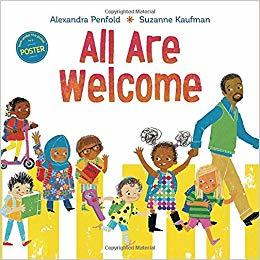
All Are Welcome by Alexandra Penfold and Suzanna Kaufman
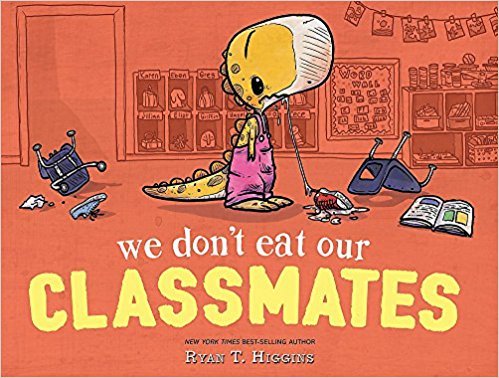
We Don’t Eat Our Classmates by Ryan T. Higgins
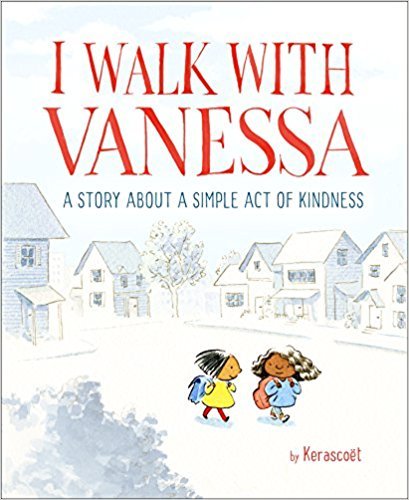
I Walk With Vanessa by Kerascoet

Mixed – A Colorful Story by Arree Chung
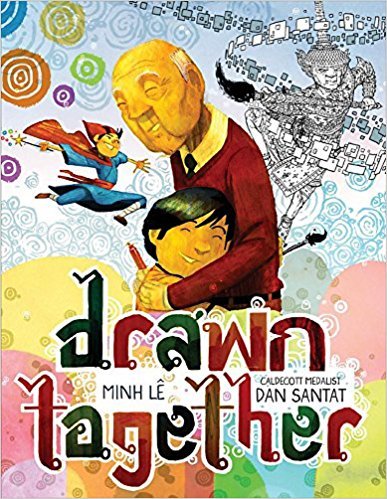
Drawn Together by Minh Le and Dan Santat
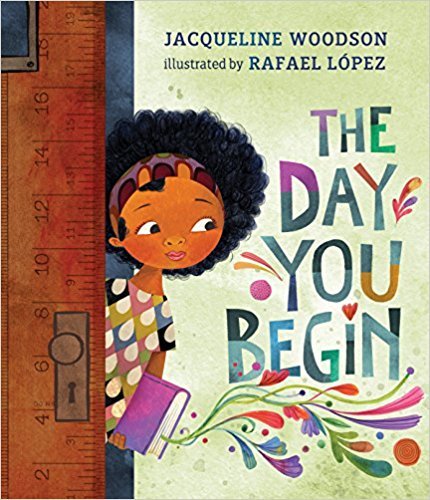
The Day You Begin by Jacqueline Woodson and Rafael Lopez
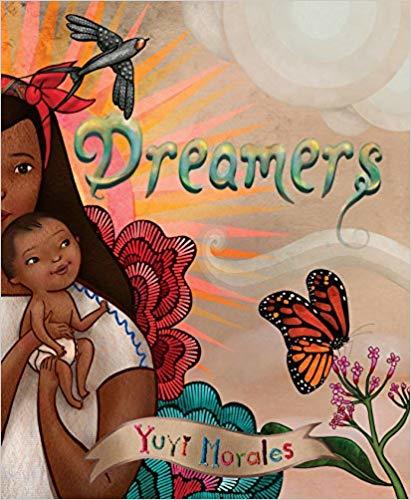
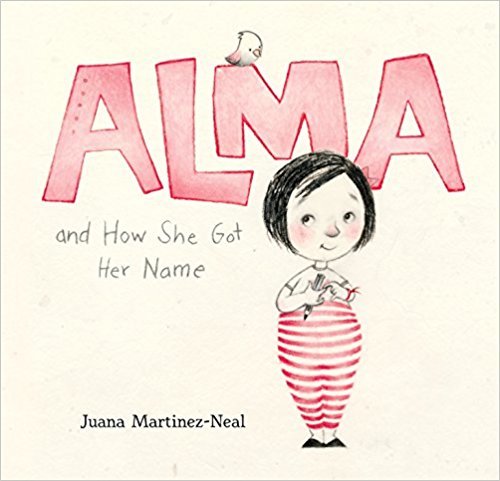
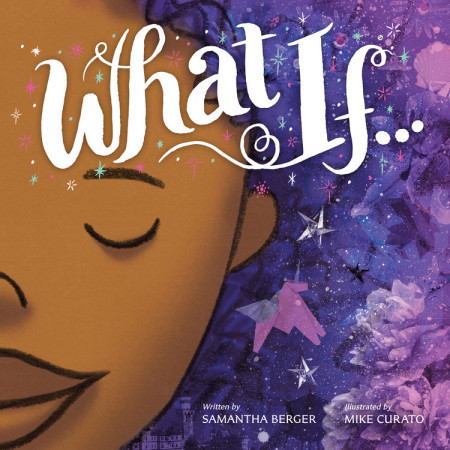
What if by Samantha Berger and Mike Curato
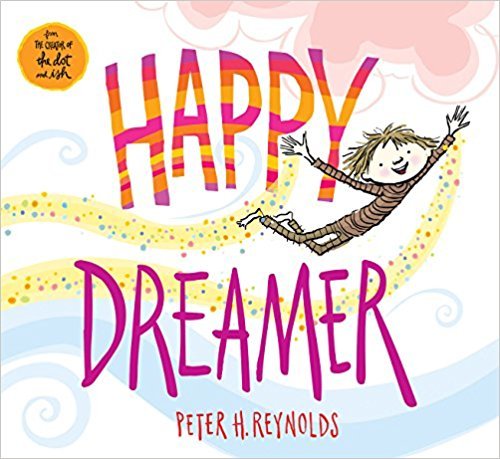
Happy Dreamer by Peter H. Reynolds

Be Kind by Pat Zietlow Miller and Jen Hill

Welcome: A Mo Willems Guide for New Arrivals

You Hold Me Up by Monique Gray Smith and Danielle Daniel

My Teacher is a Monster (No, I am Not) by Peter Brown

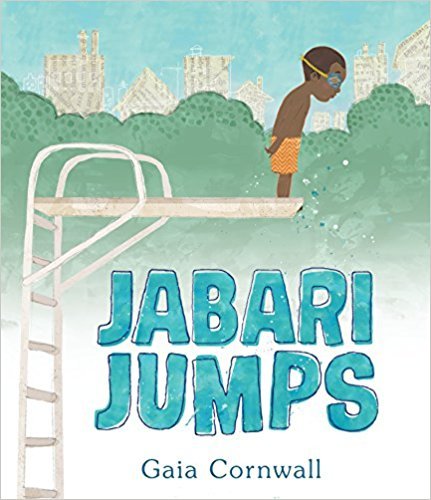
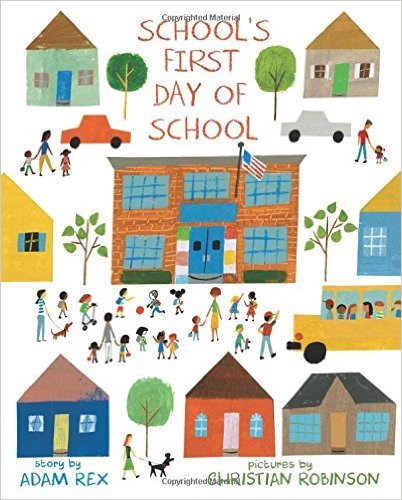
School’s First Day of School written by Adam Rex and illustrated by Christian Robinson
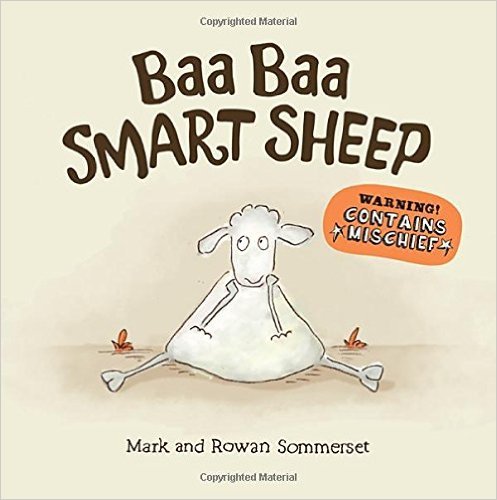
Baa Baa Smart Sheep created by Mark and Rowan Sommerset
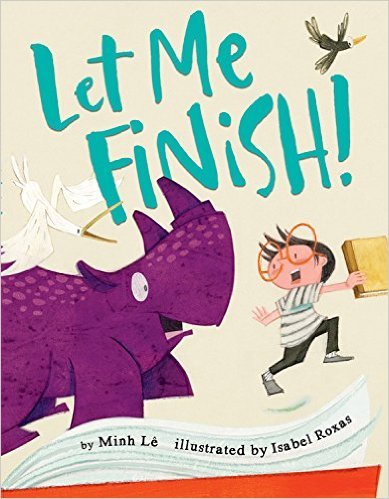
Let Me Finish written by Minh Le illustrated by Isabel Roxas.
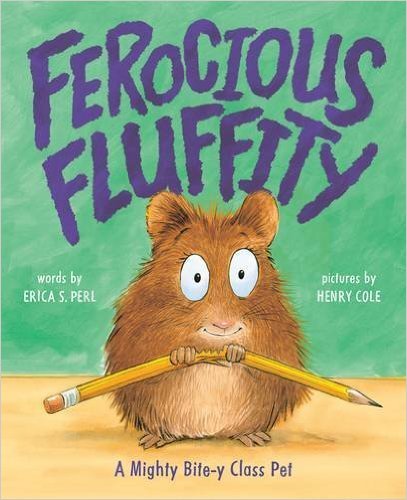
Ferocious Fluffity written by Erica S. Perl and illustrated by Henry Cole
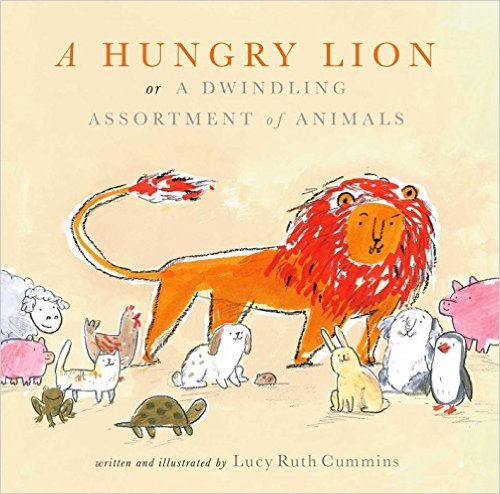
A Hungry Lion or A Dwindling Assortment of Animals by Lucy Ruth Cummins

Unicorn Thinks He’s Pretty Great by Bob Shea
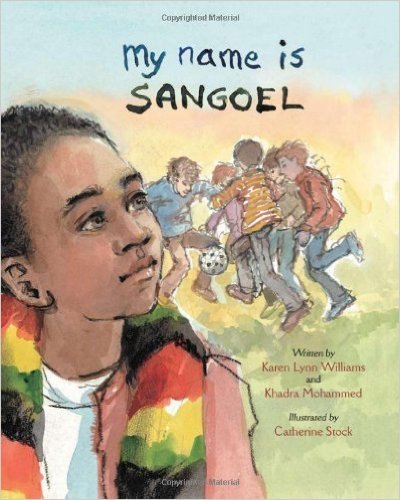
My Name Is Sangoel by Karen Williams (Author), Khadra Mohammed (Author), Catherine Stock (Illustrator)

Ballet Cat The Totally Secret Secret by Bob Shea

Elwood Bigfoot Wanted: Birdie Friends by Jill Esbaum
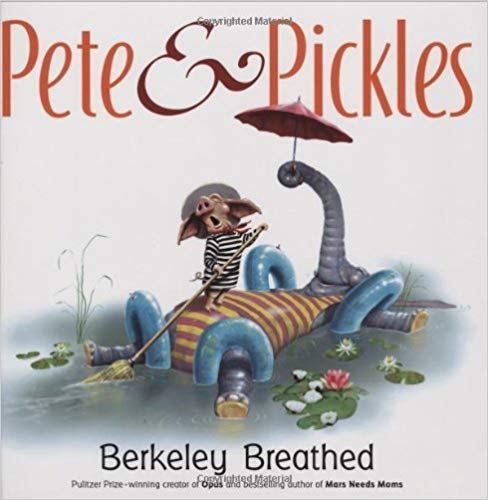
Pete & Pickles by Berkeley Breathed
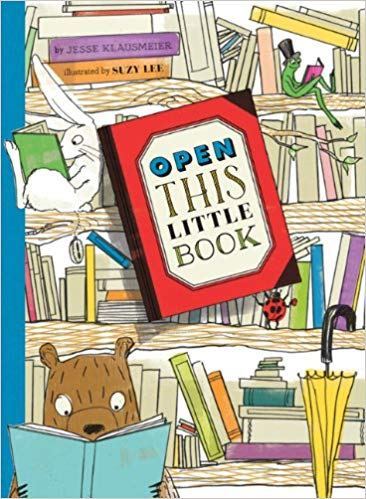
Open This Little Book by Jesse Klausmeier

What are your favorite first week of school picture books? To see all of our favorites, go here
July 31, 2018
On Not Being a Reader…Yet
[image error]
She tells me she doesn’t want to go to first grade. That she no longer wants to be a first grader.
This child who loves school.
This child who loves her teachers.
This child who has been beaming since the day she realized that after kindergarten came first grade, another year to learn, another year to grow.
And yet, here she is, declaring that for her school is no longer where she wants to be. So I ask, what changed? Why not? And she gets a little quiet, sinks a little bit into my body, snuggles up as if the secret is hard to carry and tells me quietly, “I don’t know how to read…”
Because in her mind, all first graders know how to read. Because in her mind all first graders know how to look at a book and automatically unlock all of its secrets just like that. And why shouldn’t she? Hew twin brother, 21 minutes younger, is already deciphering words, putting letters together to uncover the mystery of the page before him. Asking me what this word means. How to spell this word.
And yet she sits in front of a page still working through her letter sounds, trying to remember the foundational blocks before she pieces them together. She sits in front of a page and instead of seeing opportunity she sees something that she cannot conquer, that she has not conquered, despite now being an almost first grader who supposedly should have conquered it.
I realize that once again, our well-meaning intentions, those benchmarks we put in place to ensure every child is a success has claimed another temporary victim whose self-esteem now relies on a part of her that her brain simply isn’t developmentally ready for. Because that’s it. There is nothing wrong with her capabilities. Nothing wrong with her skills. Nothing wrong with that smart brain of hers, other than that it is not ready. Not ready right now, no matter how many district mandates tries to say she should be, but she will be.
And so I wonder how often do we lose kids within our standards? How often do we add labels because of a rigid system that tells us not only how each child should learn but also when and then lets us decide that a perfectly fine child is now behind. How often do we, because of outside forces, lose a child’s place in school because a chart, a book, a system, told us that the child was lost.
I will tell you this, much like I told my Ida, she is a reader. She is a reader who is figuring it out. She is a reader who is growing. But more importantly, she is a child. A child who will read when she is ready. Who is ready for first grade despite the benchmarks reminders of what she should be able to do. She is ready and until the first day of school, and for every day after, we will snuggle into bed together with a book, reading the pages together, developing at the pace that was intended. Not the one dictated by something that will never know the nuances of my child.
If you like what you read here, consider reading my newest book, Passionate Readers – The Art of Reaching and Engaging Every Child. This book focuses on the five keys we can implement into any reading community to strengthen student reading experiences, even within the 45 minute English block. If you are looking for solutions and ideas for how to re-engage all of your students consider reading my very first book Passionate Learners – How to Engage and Empower Your Students. Also, if you are wondering where I will be in the coming year or would like to have me speak, please see this page.
July 27, 2018
On Boy Books and Girl Books

I get asked for a lot of book recommendations, I think it comes with the territory when you share the love of books. And while I love pairing books with potential readers, I have also noticed a pattern that causes me to pause, that should cause all of us to pause.
I get asked for a lot of books featuring male lead characters for male readers.
When I ask why the need for a male lead, I am often told that “they” just don’t think a boy will read a “girl book.” That a boy will not like a book about feelings. That a boy only wants books that have action. That have other boys in it. That feature characters that look just like them or at the very least think like them.
As if every single boy thinks alike.
When written like this it is easy to see the problem; when we assume that there is such a thing as books for girls and books for boys, we are continuing a tired and sexist narrative that has only furthered the power inequity that already exists within our society. We are creating a new generation of mansplaining, of groupthink, of toxic masculinity. Of girls only liking one thing, and boys liking another. Of men and women being from different planets. Of readers being shaped more by their assigned gender than their actual interests.
We are furthering the stereotype that boys don’t like to read about girls because they see little value in what girls do.
We are furthering the stereotype that boys don’t like to read about feelings because they are somehow above all of that.
We are furthering the stereotype of what it means to be a boy which translates into what it means to be a man and not seeing the incredible harm in that.
Because what about the boys that love a good tearjerker? What about the boys that don’t like sports? What about the boys that love to experience the emotional development of a character? What about the boys that love a great female lead character? What about the girls who don’t fit into the opposite boxes? Do they not deserve to have books suggested to them, no matter the gender of the protagonist?
And I think of my own children, my three girls and one boy, whose reading interests are as varied as their personalities. Sure there are Minecraft books being read by Oskar, but not until Thea reads them first. Sure there are unicorn books with pink sparkly covers being read by Augustine but not until Oskar sees if the unicorn gets rescued first. I would hate for anyone to assume that they knew who they were as readers based only on their gender.
So when we claim that a read-aloud featuring a female protagonist will likely not catch the attention of our boy readers, we have whittled the male reading identity down to practically nothing. Males – good. Sports – good. Action – good. We have diminished what it means to be a reader who develops with the books they read. We have diminished what it means to identify as male. We have diminished their chance to learn from a perspective that may at first seem foreign but in the end may just be more similar than they ever thought. We have effectively boxed our boys in only to then wonder why they may act a certain way.
How often does this thinking then translate into the very books we recommend to the boys we teach? To the girls? How often do our assumptions about their needs as a reader surpass what they actually need? How often does this translate into the read alouds we choose? The texts we bless by spending our time on them as a community?
And I realize that I don’t get asked the opposite very often. That often when I am asked for a recommendation for a female reader, the gender of the protagonist is hardly ever brought up. That instead the most common descriptor is a strong story development, a story that will hold their attention. Why do our boys not deserve the same?
So I am wondering if we for once and for all, can we all agree that there is no such thing as a girl or a boy book? That kids need to be exposed to characters that inspire them, no matter their gender. That kids need to be exposed to characters that will expand their worldviews and invite them into new worlds that they knew little of before, no matter their gender. That kids need to be exposed to great books, without us adults thinking that they will only read a certain type of book based on what we see in front of us.
We must give them a chance to experience more than what they are. Books allow us to do just that, but not if they never read them. Not if we never recommend them. That’s on us, which means we can change it, so let’s do that starting now.
If you like what you read here, consider reading my newest book, Passionate Readers – The Art of Reaching and Engaging Every Child. This book focuses on the five keys we can implement into any reading community to strengthen student reading experiences, even within the 45 minute English block. If you are looking for solutions and ideas for how to re-engage all of your students consider reading my very first book Passionate Learners – How to Engage and Empower Your Students. Also, if you are wondering where I will be in the coming year or would like to have me speak, please see this page.
July 25, 2018
On the First Day of School
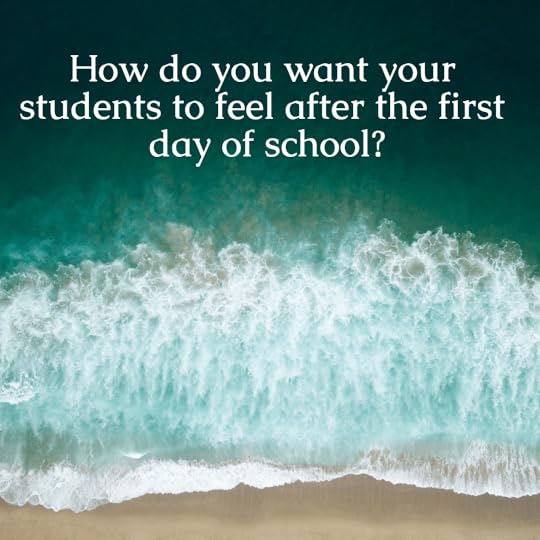
Sitting next to the ocean on vacation with three feverish children has given me a lot of time to think. To relax. To lay puzzles. Read books. Take walks. Recharge. I wish everyone could have a quiet time like this.
In the quiet, the new school year sneaks in. Thoughts and ideas spring forth, the excitement starts to build. There are changes this year once again; only three classes to teach, each 90 minutes long. New focuses brought in. New ideas to try. A sense of urgency that cannot be replicated. I cannot wait.
And so I think about the very first day of school. Of the experience, we will have. Of the things, we will do together. But most importantly, how I want our students to feel after they leave our classroom experience together. How I would love for them to feel at the end of the day. Hopefully excited, hopefully intrigued. Hopefully safe. Hopefully accepted. Hopefully wanting to come back.
Because when we plan for the first day of school, that’s what we should be planning for; how they feel after they leave us.
Not just all of the things we need to do, but the very tone we set. Not just all we have to cover, but the beginnings of the relationships we will create.
And so I plan for a picture book read aloud. I plan for book shopping. I plan for conversation, for the beginning moments of community. I plan for laughter. I plan for fun.
The stuff? The projects? The nuts and bolts of our year together? That will come. But on that very first day, it is not what is most important; our beginning relationship as a community is. And so that’s what we focus on.
Everything else can wait.
How do you want your students to feel after the first day of school?
If you like what you read here, consider reading my newest book, Passionate Readers – The Art of Reaching and Engaging Every Child. This book focuses on the five keys we can implement into any reading community to strengthen student reading experiences, even within the 45 minute English block. If you are looking for solutions and ideas for how to re-engage all of your students consider reading my very first book Passionate Learners – How to Engage and Empower Your Students. Also, if you are wondering where I will be in the coming year or would like to have me speak, please see this page.
July 23, 2018
How to Easily Do A Book Talk
[image error]
One of the pillars of our reading community is the daily book talk. While I used to do them once in a while, I was spurred on by the wisdom of Penny Kittle to do one every single day, which I have now fully embraced for the past few years.
So in the last few years, I have done a book talk almost every single day right after we finish our independent reading. It takes less than two minutes and is fairly simple. I used to plan them out much more but realized that it added another level of work to my already jam-packed day and that it didn’t seem to make a difference to the students whether I did a pre-scripted one or one that was more spur of the moment. So this is what our book talks look like now.
Preparation:
Pick the text you will book talk – note this can be a chapter book, audiobook, a collection of short stories or whatever you feel like blessing as Linda Gambrell reminds us.
I like to book talk a variety of new books I have read as well as older books that haven’t been discovered yet. One place I look to for inspiration is what my students have recommended in the past.
Decide your angle: Are you book talking it because you read it and it was amazing? Because you abandoned it and need someone to prove you wrong? Because you added it to the library but haven’t read it?
Prepare your visual. I like to project the cover of the book so that students can easily write down the tile. I also put any genres abbreviations on the slide and whether or not is a more mature book.
Have the physical book ready to hold up and hand to someone or place on a designated book talk shelf or display.
During the book talk:
Keep it short and sweet. I tend to say a few sentences about the book and why I liked it/abandoned it/purchased it and then read either the first page, the inside flap or the back cover. I love these teasers as they are already made for us.
Have the book ready to hand out. The only time I break this recommendation is when I just finished a book and I want to book talk it to all of my classes. Then I try to find extra copies beforehand, such as from our school library.
Students should have their to-be-read list out which is located either in their readers’ notebook or using the Goodreads app. This is a routine expectation we start with the very first week.
Pointers:
Start to transfer ownership of the book talks to students fairly early on, you should not be the only one book talking a book. I love using the 30-second book talk idea to help students become more comfortable with the format and also ensure that everyone participates.
If I am the one doing the book talk there is only one given, if it is students, then there can be up to three depending on their length. Again, this is short and sweet, not the actual teaching point of the class.
If many students want to book talk their book, consider making it the teaching point and dedicate a lesson time for it or have them do a speech about their favorite book.
Keep an anchor chart or some sort of visual of which books you have book talked, not only does it provide a reminder to students about the books shared, but it also allows you to ensure that you are providing inclusive book talks that do not just fall under one genre, cultural heritage or some other category.
Place book talked book the same place so that students know where to find them. We have a book tree that serves as everyone’s place to recommend books so that is where they go.
Check to see if there are book trailers available. I still think the book trailer for The False Prince by Jennifer A. Nielsen has convinced more students to read the book than I ever have, and I love that book.
I have loved doing daily book talks and also getting them from students and I now see them as a vital component of any thriving reading community. When we book talk a book it is the invitation into a relationship with that book for all of our students, what a powerful teaching tool that is.
My Teacher Lesson Planner
Even though September is still far away, my mind has been on my classroom lately. How can it not be when I am as excited to meet my new students as I am? This is also the first year that I get to go back to block teaching, but this time in 7th grade, rather than elementary. To say my mind is swimming with ideas as I sit by the ocean would be an understatement.
I realized that one of the tools I seem to need every year is a great lesson planner. I have gone through many iterations, none that I truly loved, and yet, as I looked online I felt a little inspired. You see, those beautiful lesson planners for sale are truly gorgeous, but…I need different things than what they offer. I need a place to actually plan the different components of my class, a place to keep student birthdays, a place to put my data in when I have it, and so on.
Rather than purchase one of the very pretty, but perhaps not so needed, teacher lesson planners that I see advertised everywhere, I thought I would just make my own. While it may not be put together for me, I can put this in a binder, add what I need, change the pages I don’t like, and truly make it work for me.
I figure the money I save by making my own I can use on books and scratch and sniff stickers.
So what are the components of my teacher lesson planner this year? Feel free to use as your own, as some of these I have created and some I have merely found online. These are the different tabbed components.
Student Checklist. I use a very easy table that I simply type up every year with the list of student names. Once I have done that, I can use the table for all sort of things throughout the year. It ends up looking something like this.
Year overview calendar. I like being able to see the year at a glance, so I was thrilled to find this school year calendar offered for printing by Vertex 42. There are also many others out there that you can simply print.
Monthly overview calendar. My school functions on a black/orange schedule, and while my day doesn’t change, it helps to know which day it is. I usually print my own school’s monthly calendar but found this option online as well for 2018 and 2019. This is also where I plan to place student birthdays on so I can make sure to celebrate them in style.
Weekly planner. This is the document I am still working on as I continue to tweak my 90-minute schedule. I will write more about this once the year is underway I bet, but for now, this is my working schedule and my weekly plan template.
[image error]
Data section. This is where I like to keep my rosters, my reading data, and also any IEP, 504, ESL, or health notes.
Standards section. Our standards have been tweaked every year, so I like to keep a printed copy handy rather than have to look it up each time.
Extra section. Every year, I have a few paper copies of things I need to keep handy but they don’t really fit under a theme. That’s where the extra section comes in, use it for notes, for copies, numbers, whatever you need.
All of these sections will be placed in some sort of color binder with some sort of tabs. I know it’s not as much fun as some of the planners I have seen, but you know what, it works for me.
July 19, 2018
We Send You Our Best
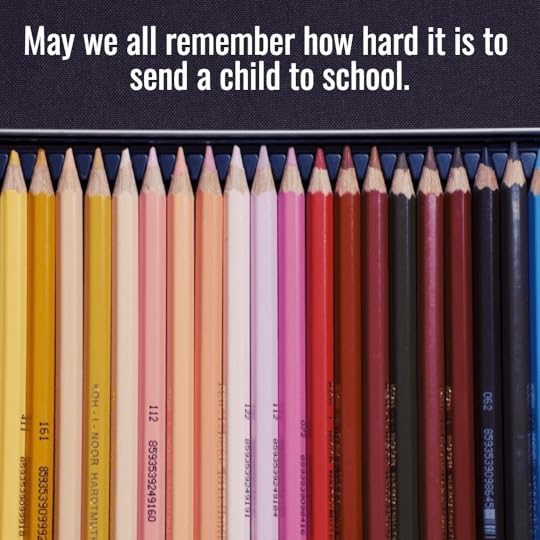
I have shared Thea’s story with school for years. How our oldest daughter was labeled a struggling reader in kindergarten and has been in intervention ever since. How she declared that reading was simply too hard in 2nd grade, despite her incredible teachers, but that Dog Man by Dav Pilkey made her believe that she was a reader and that she had always been a reader.
How our oldest daughter was bullied so badly that she asked whether you could survive without friends. That she ended up changed last year, new pieces of a puzzle that we have yet to figure out how to fit together.
I have shared how we have we searched for answers. How we have focused on protecting her hope of reading. Her love of school. How we have flooded her with books, fought for her right to be safe, and seemingly tried everything we can to make her believe that she has worth.
Thea is a child who tries even when it is hard. She is our dreams come true.
What I have never shared, fully, is the guilt that comes with having your child identified as someone who hasn’t learned what they should. The shame in your own parental structures. The questioning of your own ability to parent successful children who do not need intervention. Who do not end up being a question mark.
Who do not end up being bullied. Being the victim of other children’s vicious nature and whims.
Who do not end up being the parents of a child who thinks that she doesn’t deserve friends, because she is lame.
I think of all of those emotions that are tied in with our own children’s journey. How their journey in school only seems to highlight the failures we have as parents. As people. How we blame ourselves when they fail to reach benchmarks. When they get in trouble. When they fail to find the community that other children seem to so easily find. When they make decisions that we seemingly cannot understand and we know that the teachers that teach them may very well think that we are the ones that pushed them in that direction.
How many nights of conversations my husband and I have had about what we were doing wrong. About what else we could do. Trying to come up with solutions to a situation we are not sure we understand. How many nights we have held our tongue and assumed that perhaps a teacher did not see how something affected our child. How many nights I have cried over how I have failed my own child because of what she has to face. How I wish I could take her place but that I know that as a parent that is not my role.
I think of how many times I have assumed that a child stood in front of me and acted a certain way because that is how their parents or those at home acted. That the child in front of me is surely the product of everything those at home failed to do.
I am ashamed of this realization. Of the judgment, I have so easily passed. Of the assumptions, I have let shape my decisions in how to work with kids. In how to work with those at home. But in shame comes learning. Comes growth.
Because what Thea has taught me, what all of our children have taught me, is that most parents try their best. That we send you the very best kid we can. That we have probably done all of the things that are meant to make our child as successful as they can but it turns out it might just not be enough.
That sometimes even though we follow the rules, take the advice, try all of the tricks, a child, our child, will still confound us. Will still mystify us. Will still make us pause as we wonder what else we could have done.
I hope my children’s teachers see us as parents who try. That they know that sometimes we don’t understand a behavior either. That we have raised them right but that doesn’t guarantee that they will act right. That even though we did all the things to raise a reader, our child, who is a reader, may not be able to read well, yet. That even though we have raised our child to be kind, helpful, and loving, others may not see her as such.
May we all remember how hard it is to send a child to school. How hard it is to let go and hope that the child that walks through those doors is the child you hoped would show up. Because we tried. Because we are trying. And I hope you see that. I hope we all remember that.
If you like what you read here, consider reading my newest book, Passionate Readers – The Art of Reaching and Engaging Every Child. This book focuses on the five keys we can implement into any reading community to strengthen student reading experiences, even within the 45 minute English block. If you are looking for solutions and ideas for how to re-engage all of your students consider reading my very first book Passionate Learners – How to Engage and Empower Your Students. Also, if you are wondering where I will be in the coming year or would like to have me speak, please see this page.



